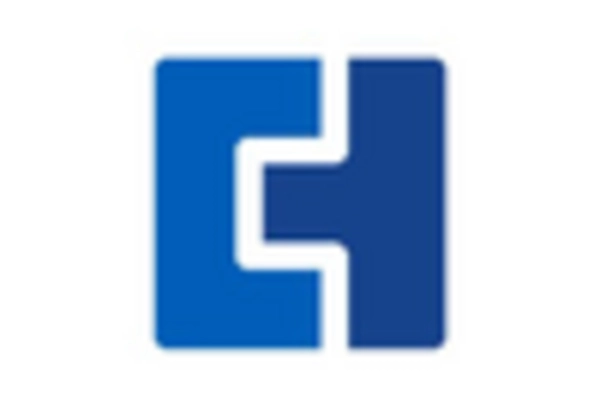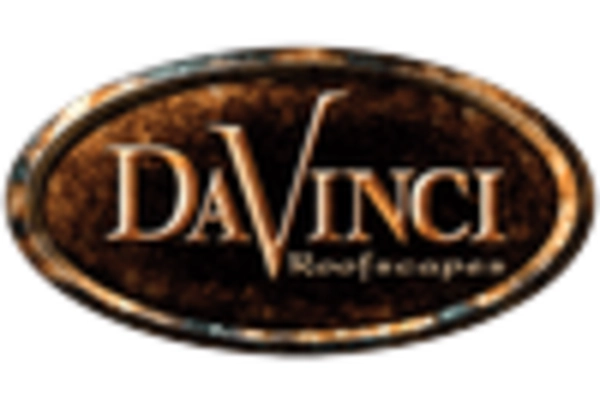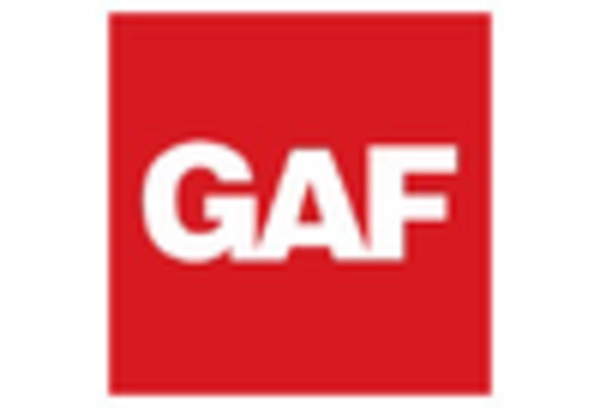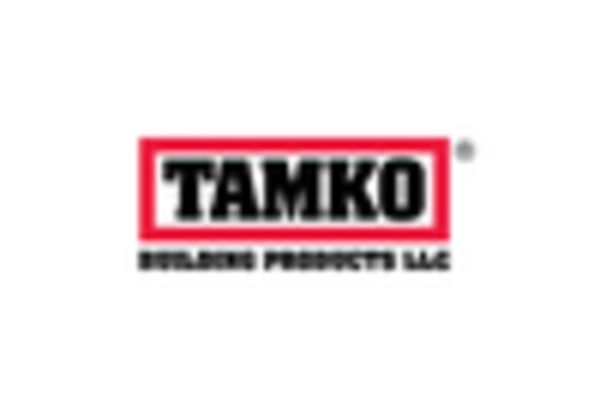Rising Demand for Durable Roofing Solutions
The composite slate-roofing market in India is experiencing a notable increase in demand for durable roofing solutions. This trend is driven by the growing awareness among consumers regarding the longevity and resilience of composite materials compared to traditional roofing options. With an estimated market growth rate of 8% annually, homeowners and builders are increasingly opting for composite slate roofing due to its ability to withstand harsh weather conditions, including heavy rainfall and extreme temperatures. The composite slate-roofing market is thus positioned to benefit from this shift, as it aligns with the needs of consumers seeking reliable and long-lasting roofing solutions. Furthermore, the durability of composite materials reduces maintenance costs over time, making them an attractive option for both residential and commercial applications.
Consumer Preference for Aesthetic Versatility
The composite slate-roofing market in India is witnessing a shift in consumer preferences towards aesthetic versatility in roofing materials. Homeowners and builders are increasingly seeking roofing solutions that not only provide durability but also enhance the visual appeal of structures. The composite slate-roofing market is responding to this demand by offering a variety of colors, textures, and styles that mimic traditional slate while providing superior performance. This trend is particularly evident in residential projects, where the aesthetic value of roofing plays a crucial role in property value. As a result, the market is expected to grow by 12% over the next few years, driven by the desire for visually appealing and functional roofing options.
Increasing Urbanization and Housing Development
The rapid urbanization in India is a key driver for the composite slate-roofing market. As urban areas expand, there is a heightened demand for housing and commercial buildings, leading to increased construction activities. The composite slate-roofing market is likely to see a surge in demand as builders and developers seek materials that offer both aesthetic appeal and functional benefits. With urban housing projects projected to grow by 15% in the next decade, the need for innovative roofing solutions becomes paramount. Composite slate roofing, known for its lightweight and versatile nature, is becoming a preferred choice among architects and builders, further propelling the market's growth in urban settings.
Technological Innovations in Composite Materials
Technological advancements in composite materials are significantly impacting the composite slate-roofing market in India. Innovations in manufacturing processes and material formulations are leading to the development of lighter, stronger, and more durable roofing products. The composite slate-roofing market is likely to benefit from these advancements, as they enhance the performance characteristics of roofing materials, making them more appealing to consumers. For instance, the introduction of advanced weather-resistant coatings and improved insulation properties is expected to drive market growth. As the industry embraces these technological innovations, the market is projected to expand by 9% annually, reflecting the increasing demand for high-performance roofing solutions.
Government Initiatives Promoting Sustainable Construction
In India, government initiatives aimed at promoting sustainable construction practices are significantly influencing the composite slate-roofing market. Policies encouraging the use of eco-friendly materials and energy-efficient building designs are gaining traction. The composite slate-roofing market stands to benefit from these initiatives, as they align with the growing emphasis on sustainability in construction. For instance, the introduction of subsidies and incentives for using green building materials has led to an increase in the adoption of composite slate roofing. This market segment is projected to grow by approximately 10% over the next five years, driven by the favorable regulatory environment and the increasing preference for sustainable building solutions among consumers and builders alike.

















Leave a Comment